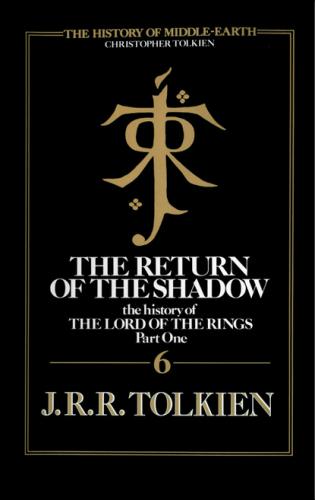XX THE THIRD PHASE (2): AT THE SIGN OF THE PRANCING PONY
XXI THE THIRD PHASE (3): TO WEATHERTOP AND RIVENDELL
XXII NEW UNCERTAINTIES AND NEW PROJECTIONS
Other books by J.R.R. Tolkien
The page numbers in this text relate to the printed version of the book; they do not match the pages of your ebook. Due to the high number of references to specific lines of text in the translation, these line numbers, together with their accompanying lines of text, have been fixed in position so that the correct words remain anchored to the correct line number; the text of the translation will therefore not reflow in the same way as the rest of the ebook. After a hyperlink has been activated we recommend using your device’s “Back” button to return to the original location. Where no hyperlink is present you can use your ebook reader’s search tool to find a specific word or passage.
All of the special characters below appear in this ebook. If your e-reader is not displaying these characters you may find this affects your reading enjoyment of the ebook.
| Text | Character |
|
|
î |
|
|
û |
|
|
ó |
|
|
â |
|
|
ú |
The original opening page of The Lord of the Rings
The original description of the writing on the Ring
The Ring-verse, and the emergence of the Ruling Ring in the narrative
Plan of Bree
The emergence of Treebeard
The earliest map of the lands south of the Map of Wilderland in The Hobbit
The inscription of the West Gate of Moria
As is well known, the manuscripts and typescripts of The Lord of the Rings were sold by J. R. R. Tolkien to Marquette University, Milwaukee, a few years after its publication, together with those of The Hobbit and Farmer Giles of Ham, and also Mr. Bliss. A long time elapsed between the shipment of these latter papers, which reached Marquette in July 1957, and that of The Lord of the Rings, which did not arrive until the following year. The reason for this was that my father had undertaken to sort, annotate, and date the multifarious manuscripts of The Lord of the Rings, but found it impossible at that time to do the work required. It is clear that he never did so, and in the end let the papers go just as they were; it was noted when they reached Marquette that they were ‘in no order’. Had he done so, he must have seen at that time that, very large though the manuscript collection was, it was nonetheless incomplete.
Seven years later, in 1965, when he was working on the revision of The Lord of the Rings, he wrote to the Director of Libraries at Marquette, asking if a certain scheme of dates and events in the narrative was to be found there, since he had ‘never made out any full schedule or note of the papers transferred to you.’ In this letter he explained that the transfer had taken place at a time when his papers were dispersed between his house in Headington (Oxford) and his rooms in Merton College; and he also said that he now found himself still in possession of ‘written matter’ that ‘should belong to you’: when he had finished the revision of The Lord of the Rings he would look into the question. But he did not do so.
These papers passed to me on his death eight years later; but though Humphrey Carpenter made reference to them in his Biography (1977) and cited from them some early notes, I neglected them for many years, being absorbed in the long work of tracing the evolution of the narratives of the Elder Days, the legends of Beleriand and Valinor. The publication of Volume III of ‘The History of Middle-earth’ was already approaching before I had any idea that the ‘History’ might extend to an account of the writing of The Lord of the Rings. During the last three years, however, I have been engaged at intervals in the decipherment and analysis of The Lord of the Rings manuscripts in my possession (a task still far from completed). It has emerged from this that the papers left behind in 1958 consist largely of the earliest phases of composition, although in some cases (and most notably in the first chapter, which was rewritten many times over) successive versions found among these papers bring the narrative to an advanced state. In general, however, it was only the initial notes and earliest drafts, with outlines for the further course of the story, that remained in England when the great bulk of the papers went to Marquette.
I do not of course know how it came about that these particular manuscripts came to be left out of the consignment to Marquette; but I think that an explanation in general terms can be found readily enough. Immensely prolific as my father was (‘I found not being able to use a pen or pencil as defeating as the loss of her beak would be to a hen,’ he wrote to Stanley Unwin in 1963, when suffering from an ailment in his right arm), constantly revising, re-using, beginning again, but never throwing any of his writing away, his papers became inextricably complex, disorganised, and dispersed. It does not seem likely that at the time of the transfer to Marquette he would have been greatly concerned with or have had any precise recollection of the early drafts, some of them supplanted and overtaken as much as twenty years before; and no doubt they had long since been set aside, forgotten, and buried.
